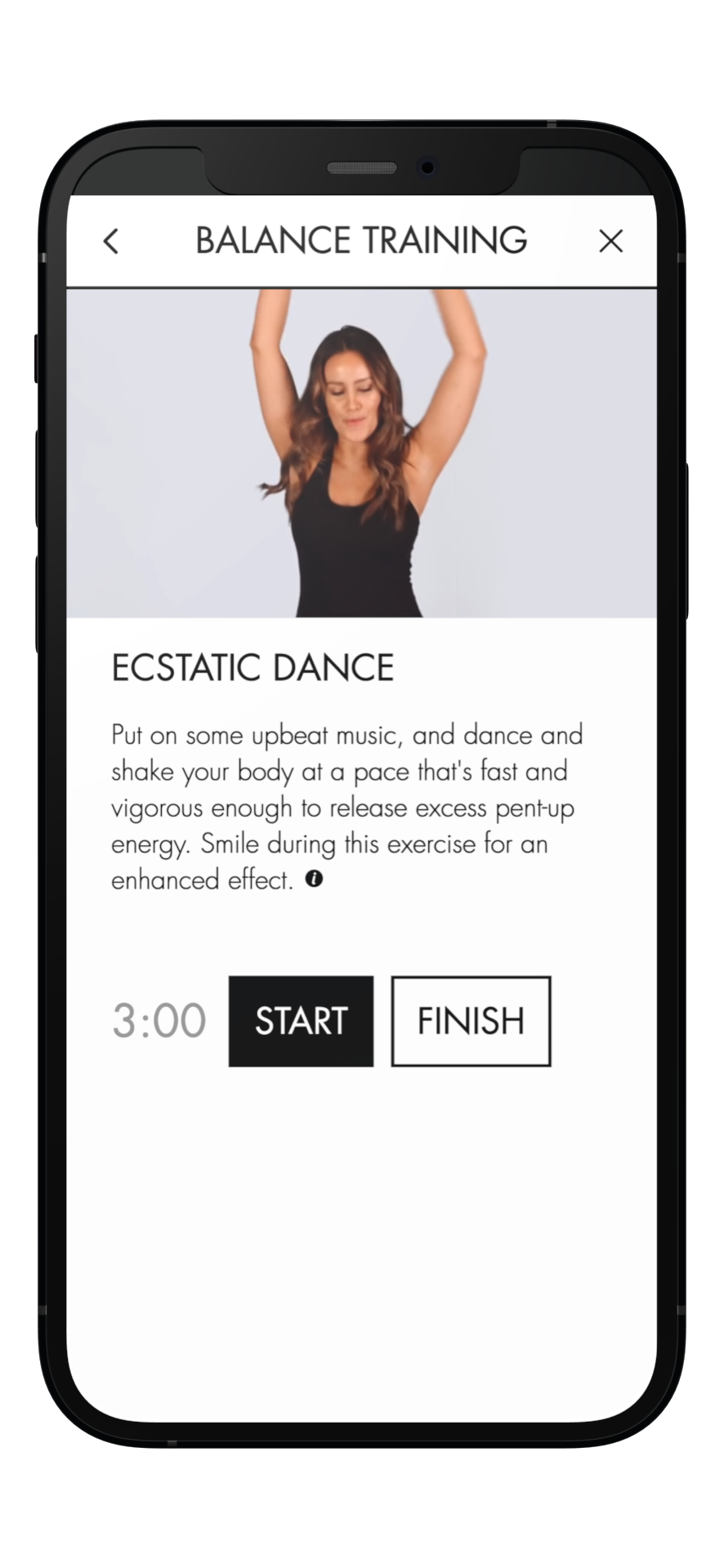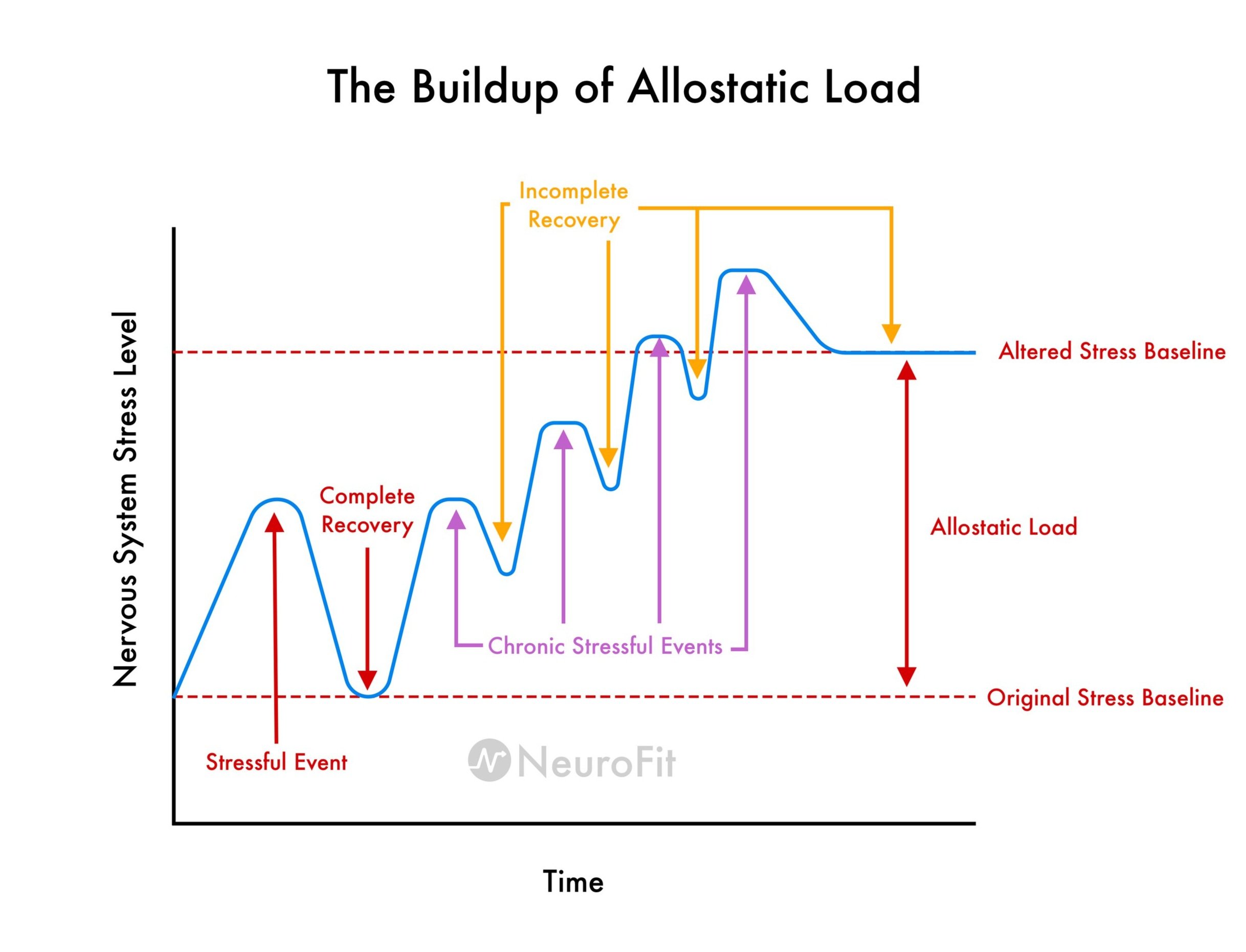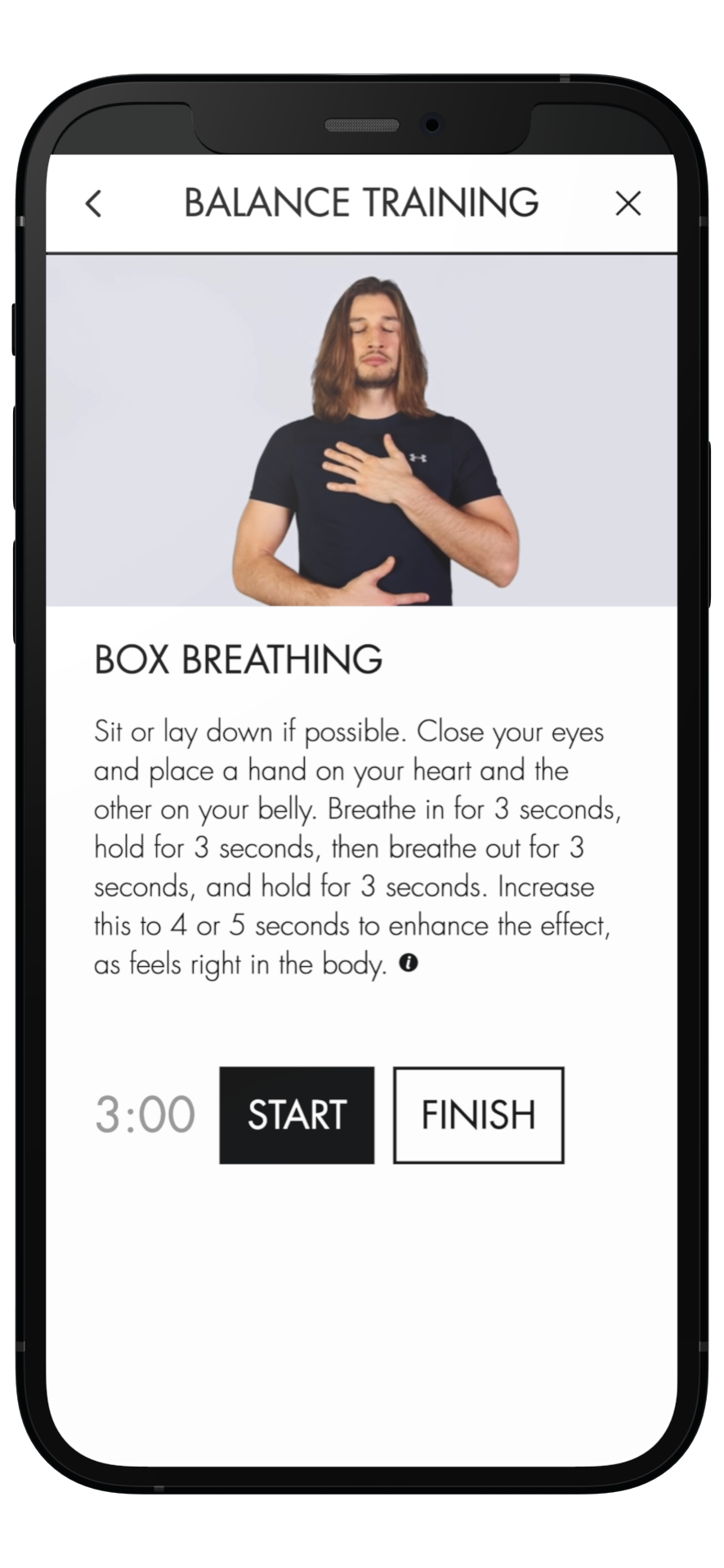Somatic Exercises To Release Trauma And Stress
SOURCE: Getty Images
Have you ever experienced a sense of heaviness, like something unseen weighing down on your body? That's what it can feel like when we carry trauma. It lodges itself in our bodies, tucked away in muscle memory and cellular walls. The truth is - our bodies remember everything.
But here's the good news: just as we hold onto these experiences physically, we also have the power to release them from our systems through somatic exercises to release trauma.
Understanding Somatic Exercises for Trauma Release
The field of somatics was pioneered by Thomas Hanna and Peter Levine, both well-known figures in the realm of body-oriented approaches to pain, discomfort, and imbalances. In fact, it was first introduced in the 1970s by Thomas Hanna, Ph.D., as a unique way to understand our bodies. Somatic exercises focus on releasing trauma trapped within our bodily structures. This technique stems from the belief that traumatic experiences can be held physically within our bodies – causing tension or stress disorders like post-traumatic stress disorder (PTSD). But how does this release occur?
The Birth of Somatic Therapy
Peter Levine's work takes center stage when discussing trauma treatment using somatic therapy. He developed an approach called "Somatic Experiencing," which aims at managing trauma and stress-related disorders effectively.
Levine’s methodology uses eye movement desensitization techniques coupled with sensorimotor psychotherapy—a blend that helps people manage their reactions towards past traumas better. The aim is not just about treating symptoms but also working through underlying causes rooted deep within us.
In essence, these exercises are all about tapping into your sensory awareness while practicing grounding techniques like deep breathing or body scans; thereby achieving mental health improvements along with physical ones.
Releasing Pent-up Negative Emotions Through Movement Techniques
Somatic exercise involves learning various body movement techniques designed specifically for trauma release purposes. From taking a simple deep breath to engaging in more complex movements involving dance—each exercise offers different levels of bodily sensations depending upon individual comfort zones.
ECSTATIC DANCE
Ecstatic Dance is a great BALANCE exercise for releasing pent up energy and releasing endorphins.
This process allows individuals suffering from psychological symptoms of trauma to experience release and relaxation. The focus is on becoming more aware of how the body feels during these exercises, to build interoception (bodily awareness) and to help in releasing pent-up negative emotions. Whether you are experiencing stress disorder or just need some help managing daily life's pressures—somatic exercises, such as those contained in the NEUROFIT App, could be a good fit for you.
Key Takeaway :
Embracing Somatic Exercises: Created by pioneers like Thomas Hanna and Peter Levine, somatic exercises help release trauma stored in our bodies. Using a blend of eye movement desensitization techniques and sensorimotor psychotherapy, these practices not only manage symptoms but also address deep-rooted causes. These exercises enhance sensory awareness through various body movements, promoting overall healing and well-being.
The Benefits of Somatic Exercises for Trauma Release
It's no secret that somatic exercises can work wonders on our physical health. But did you know they also offer a lifeline to those grappling with the lingering effects of trauma? These mindful movements provide more than just pain relief, offering an avenue towards emotional release and healing.
How Somatic Exercises Promote Physical Health
Somatic exercises give us a chance to tune into our bodies, encouraging better posture and balance. They make sure we're not just mechanically going through the motions but actively engaging with every stretch or flex, fully present in our bodies. This connection fosters alignment within ourselves and eases tension, contributing to significant pain relief.
Apart from this obvious benefit, there's another crucial aspect - stress relief. Engaging in these practices lets your body release pent-up energy, helping to regulate and strengthen your nervous system and reduce allostatic load.
CREDIT: NEUROFIT
How Somatic Exercises Support a Regulated Nervous System
Somatic exercises are an excellent tool for supporting a regulated nervous system. They focus on grounding techniques like body scans and deep breathing to increase sensory awareness of physical sensations, which can play a significant role in trauma release. The use of body scans, one common somatic exercise, involves learning to observe the body's responses without judgment. It cultivates bodily awareness by letting you tune into what your body feels like from within.
The Role of Breathwork in Somatic Exercises
Another cornerstone is breathwork. Deep breathing helps people regulate their nervous systems as it allows them to control their physiological responses actively. During stress or anxiety episodes, our bodies often switch into 'fight-or-flight' mode — this disrupts our normal patterns and results in rapid shallow breaths.
But here’s where the magic happens:
Deep breathing works wonders because it triggers relaxation response - flipping the switch back from fight-or-flight mode towards calmness and peace.
This technique not only offers immediate relief but also has long-term benefits when practiced regularly – similar to how hitting the gym pays off over time.
Talk about double-duty; these exercises are akin to being your own personal therapist AND fitness trainer all at once.
A study shows that incorporating regular deep-breathing sessions can lead towards improved mental health conditions such as post-traumatic stress disorder. And let’s be honest: Who wouldn’t want some free therapy?
To enhance these effects further, combining breathwork with eye movement therapy and other body movement techniques can create a more holistic approach. This multi-faceted method addresses physical sensations related to trauma, helping individuals release pent-up stress.
So the next time you find yourself spiraling into anxiety or feeling overwhelmed by life’s curveballs – remember that somatic exercises could be your secret weapon for achieving a balanced mind-body state.
BREATHWORK
Breathwork doesn’t need to be complicated or take a long time. Simple exercises, like Box Breathing contained inside the NEUROFIT App can help regulate your nervous system in just minutes.
Key Takeaway:
Somatic exercises, like body scans and deep breathing, help regulate your nervous system by increasing sensory awareness. These grounding techniques offer a powerful way to release trauma and manage stress. They're similar to being your own therapist and fitness trainer at once. Regular practice can improve mental health conditions like PTSD, especially when combined with other body movement techniques for a holistic approach.
Different Types of Somatic Exercises for Trauma Release
Just as the body can store stress, it also holds the key to releasing it. That's where somatic exercises come in handy. These exercises help you tune into your bodily sensations and release pent-up negative emotions that might be contributing to physical or psychological symptoms.
The Power of Somatic Stretching
Somatic stretching is one type of exercise designed to relax and release tension from the body. By focusing on slow, controlled movements, this practice builds bodily awareness while promoting relaxation.
One popular method involves learning how a deep breath can encourage gentle stretches in different parts of the body. As each exhale lets go of more tension, there’s an opportunity for trauma release.
Eye Movement Desensitization: The Magic Wand Exercise
A widely-utilized approach by many body therapists is Eye Movement Desensitization (EMD). Often practiced with professional guidance, EMD has been effective in treating trauma-related disorders through its focus on eye movement techniques. But remember—don't try anything without proper supervision from a professional.
Sensorimotor Psychotherapy: Engaging Body Movements
Moving beyond traditional talk therapy work, sensorimotor psychotherapy combines both cognitive approaches with physical movement techniques derived from yoga and martial arts—a great example being dance movement therapy. This approach focuses heavily on sensory awareness exercises like grounding techniques or simple actions such as dipping your hands alternately into warm water then cold water.
This way somatic therapy helps people suffering from post-traumatic stress disorder to build a bridge between their mental health and physical sensations, making it an ideal choice for trauma release.
Adding these exercises into your routine might feel overwhelming initially. But, as you keep at it, they'll become a natural part of your day. There's no need to struggle alone.
Incorporating Somatic Exercises into Daily Life
Integrating somatic exercises into your everyday routine doesn't need to be complex. Let's explore practical ways to weave these techniques seamlessly throughout your day with the NEUROFIT App.
Practicing Somatic Exercises in the Morning
To start, wake up with a few grounding exercises like body tapping or deep breathing. By engaging in body scans and deep breathing, you can not only become more attuned to physical sensations but also positively regulate your nervous system for the day ahead. Sensory awareness can contribute significantly to mental health and stress disorder management, setting a positive tone for your day.
BALANCE IN THE MORNING
The NEUROFIT App has a daily check-in that allows you to connect to your body, measure your HRV and BALANCE your nervous system in just a few minutes.
Somatic Breaks Throughout Your Day
Next, remember that short breaks during work hours can provide much-needed relief from accumulated stress. Take a moment every hour by setting a timer on your phone to perform BALANCE Exercises or simply take some deep breaths—remembering how this practice positively impacts both psychological symptoms and physical health.
play and dance: A Fun Way To Practice Somatics
If traditional methods seem too rigid, why not try dance movement therapy? It’s an engaging way of practicing somatic exercise while having fun.
Alternatively, choose the “Play” check-in option on the NEUROFIT App to receive personalized suggestions to get you into the Play State.
SOURCE: NEUROFIT
Finding Comfortable Positions at Night
Your daily ritual could end just as it started - with calming somatic practices such as gentle stretching or taking warm water baths before bed. Find what makes you feel comfortable; there are no hard rules here. Whether seated on a yoga mat, lying down in bed, or soaking in warm water – find positions that make you feel relaxed and grounded.
We recommend the following NEUROFIT exercises to ground you before bed:
Tonglen
Eye Press Breathing
Slowing Down Breathing
Integrating Somatic Exercises with Yoga AND PILATES
Finally, yoga and pilates enthusiasts can benefit from incorporating elements of somatics into their practice. Traditional poses can be adapted to focus more on bodily sensations and awareness, making your routine a comprehensive exercise for the body and mind.
To wrap things up, making daily somatic practices a part of your routine isn't just doable—it's hugely rewarding. These simple changes can bring about deep and meaningful benefits in your life.
Key Takeaway:
Adding somatic exercises to your daily routine is a breeze. Start your day with grounding activities such as body scans or deep breathing to balance your nervous system. Don't forget to take quick breaks during the day for trauma release workouts. Enjoy dance movement therapy and ease into the night with some light stretching or warm baths. You can even mix elements of somatics into yoga, making it an all-encompassing wellness practice.
FAQs in Relation to Somatic Exercises to Release Trauma
What are the exercises for trauma release?
Somatic exercises include body scans, deep breathing, grounding movements, and sensory awareness activities to help process stored trauma.
Many of these can be found inside the NEUROFIT App.
What are somatic practices for trauma release?
Somatic therapy uses methods like breathwork, eye movement desensitization and physical sensations exploration to treat post-traumatic stress disorders.
Somatic therapy can be quite intense for the body so we recommend a daily nervous system regulating practice to support you.
How do you release stored trauma in your body?
You can complete BALANCE exercises daily inside the NEUROFIT App to build bodily awareness (interoception), and to release stress from the body through nervous system regulation. Once the body begins to feel safe, it is much easier to release trauma stored in the body.
What are somatic exercises for emotional release?
Somatic stretching is a powerful exercise that builds body awareness and promotes relaxation, which helps facilitate emotional processing and healing from past traumas. Breathing exercises and other forms of movement are also highly effective at facilitating the release of emotions.
Conclusion
The truth is simple: Your body holds onto trauma but it also has the power to let go of it with somatic exercises and nervous system regulation. Start incorporating somatic exercises into your life today with the NEUROFIT App.






